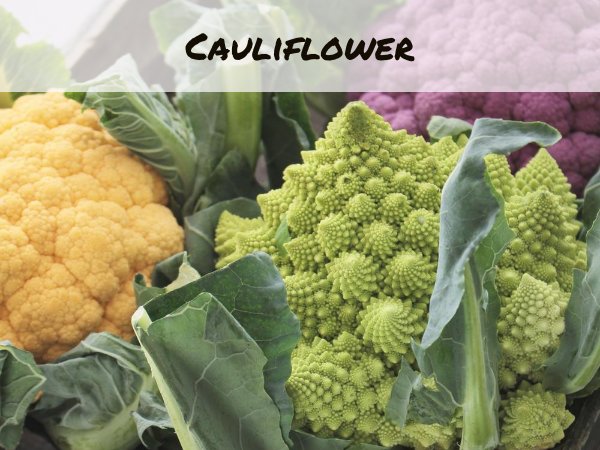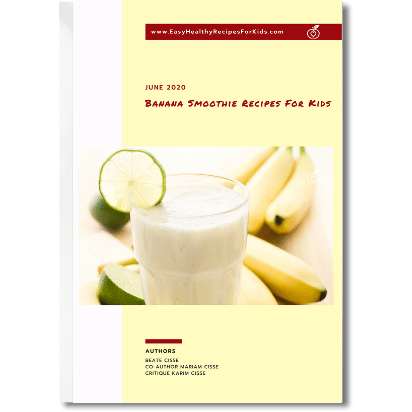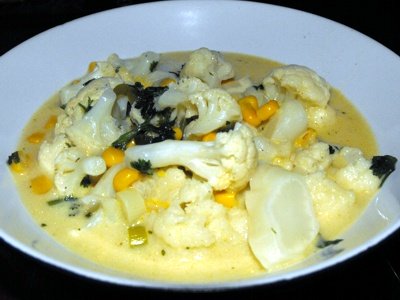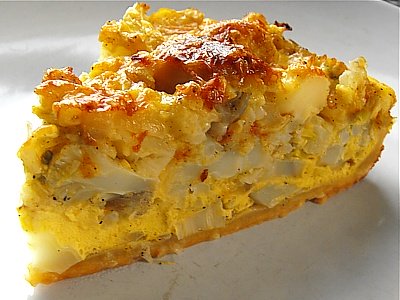Cauliflower Recipes
The cauliflower, used in cauliflower recipes, belongs to the botanic species brassica oleracea. It belongs to the same species as broccoli, cabbage, collard greens, kale, and Brussels sprouts.
The cauliflower is most widely known for its distinctive white heads formed by florets and surrounded by light green leaves. While in recent years, cauliflower varieties developed from older cultures and show off their orange, purple, and greenish color, adding a colorful variety. With their difference in color comes a slight change in taste.
Please know we love feedback so either drop "Easy Healthy Recipes For Kids" a line via the Contact Us page.
Comment or review here your experiences and successes with the recipe. Or even share your favorite recipe.

Buying cauliflower:
It is a vegetable that is available
year-round. The age of the white cauliflower heads shows by the
graininess and yellowing of the florets. Too much intense sun exposure
has this effect. Another indicator is florets losing their dense
formation.
Storing cauliflower:
The cauliflower head keeps well for 7 to 10 days without losing its firmness when bought fresh and firm from the market. Store the vegetable cool in a fridge, wrapped in a newspaper, or a plastic container. Alternatively, find the coldest place in your kitchen and keep it wrapped in a newspaper. The head should stay firm for three to five days.

Receive a free to download 27-page e-booklet:
Banana Smoothie Recipes For Kids
and subscribe to our monthly newsletter filled with new recipes, ideas and insights.
Raw cauliflower offers a high amount of vitamins and nutrients, especially vitamin C and vitamin K, with a good portion of folate, choline, and vitamin B6, among many other nutrients. Some of its nutrients are recognized in supporting cancer prevention.
Overcooking the cauliflower reduces its nutritional value, and therefore, its health benefits.
Quick tip:
The gentler the cauliflower head is processed, the more nutritional value it will provide. The worst scenario is to cook the florets in boiling water until they mushy and no longer contain these beneficial nutrients. The best way to eat cauliflower is to eat it raw. But if you can't stomach that stir fry the cauliflower for five to eight minutes, steam it or bake it to get the most out of it.
Many tend to eat just the florets, which is a bit of a waste since the leaves are edible too. Our suggestion is to plan two dishes, one where you enjoy the florets raw or steamed with a dip or two and a cauliflower salad. Cauliflower florets are also a great addition to a lamb stew mafe. For a cauliflower casserole and a cauliflower quiche, both florets and stem are both easily used. The leaves might be an excellent choice for juicing with or making a creamy cauliflower soup recipe.
Clean only the parts of the cauliflower head that you will be using:
Wash the head under lukewarm running water and scrub with a soft vegetable brush. To remove any insects soak the cauliflower head down in a bowl with a water solution of salt and vinegar for 10-15 minutes. You can almost eliminate pesticide residues by using organically grown produce.
Cut florets in even sizes for an even steaming, cooking or baking result. For more ideas visit Food to Grow on Pinterest.
What is your most liked easy cauliflower recipe?
Build your own page to share the recipe and its directions.
Do Share Your Recipe Variation Or Your Favorite One?
Do you have a favorite recipe variation or a favorite recipe? Share it!
- Easy Healthy Recipe For Kids ›
- Vegetables ›
- Cauliflower Recipes





